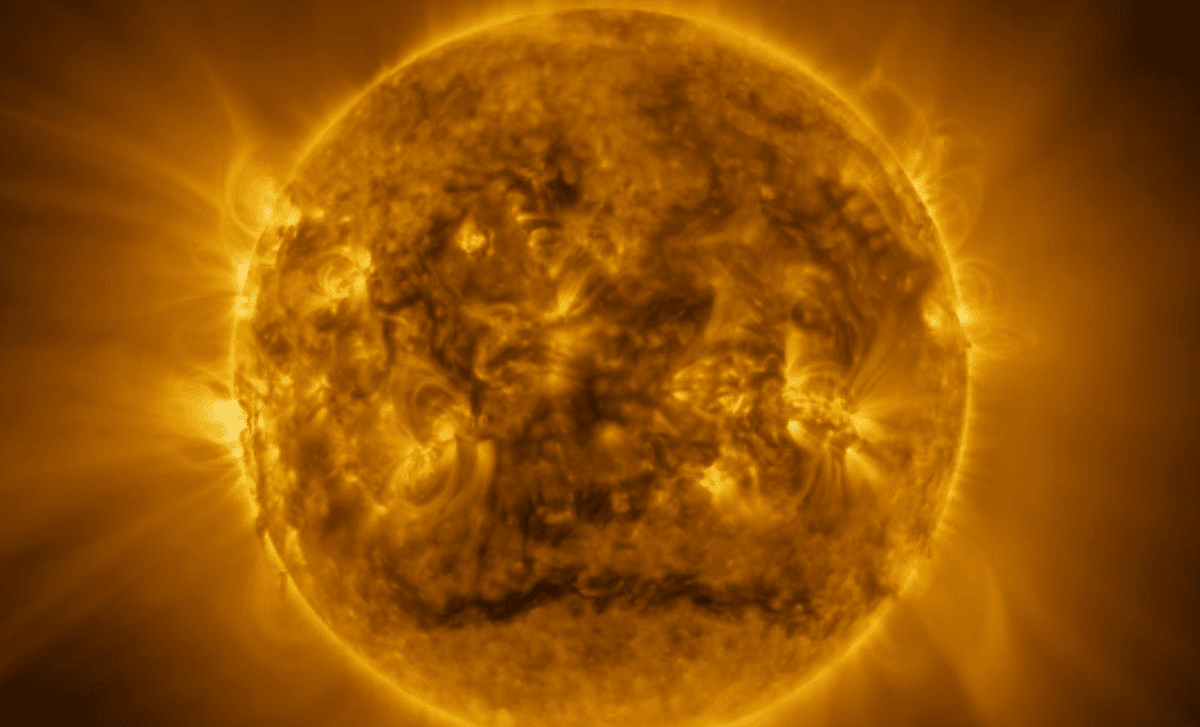A spectacular solar feature has been caught in action by the Solar Orbiter mission. On March 17, 2025, the spacecraft recorded a striking solar prominence as it hovered over the Sun’s limb. The footage, condensed into a brief video, reveals the complexity of solar dynamics rarely seen with such clarity. This visual record offers a fresh glimpse into one of the Sun’s most mesmerizing and volatile behaviors.
The Magnetic Ballet Of Plasma In The Sun’s Atmosphere
The video, released by the European Space Agency and captured by the Solar Orbiter‘s Extreme Ultraviolet Imager (EUI), showcases a dense structure of plasma suspended above the Sun’s surface. ESA, in collaboration with NASA, led the mission that recorded this event from a distance of around 63 million kilometers—roughly the orbital radius of Mercury. The prominence, a cool thread of plasma (about 10,000°C) entrapped in magnetic fields, appears dark against the Sun’s hotter million-degree corona.
What makes this video exceptional is its perspective and detail. When these structures are viewed against the blackness of space, they are known as prominences; when they appear silhouetted against the solar disk, they are referred to as filaments. This recording shows both, offering a unique duality of view. These formations can stretch tens of thousands of kilometers—many times the diameter of Earth—and persist for days or even months. In this case, the captured sequence spans just one hour, but it vividly demonstrates the restless, fluid nature of solar matter under the influence of powerful magnetic forces.
Prominences And Their Role In Solar Weather
Prominences like the one seen here are not just visual spectacles—they are fundamental to understanding space weather. These plasma structures often precede coronal mass ejections (CMEs), which are massive bursts of solar material that can travel across the solar system, disrupting satellites, power grids, and communications on Earth. By observing the early stages of these prominences with missions like Solar Orbiter, scientists can develop models to better predict these potentially disruptive events.
In addition, the dynamic interactions within prominences provide insight into the Sun’s complex magnetic architecture. They trace out invisible magnetic field lines in three dimensions, acting as natural indicators of solar magnetism in action. The looping arcs, swirls, and collapses seen in the video hint at processes that are still not fully understood, such as how energy is stored and suddenly released in the solar atmosphere.
A Mission Designed For Close Encounters
The Solar Orbiter mission is uniquely equipped for such discoveries. Launched in 2020, the spacecraft is designed to approach within 42 million kilometers of the Sun—closer than any previous European mission. Its instruments include high-resolution imagers like the EUI, which records in the extreme ultraviolet, a range invisible to the human eye but essential for studying solar plasma.
The prominence video highlights the mission’s growing importance in solar science. By combining imaging with in-situ measurements of the solar wind and magnetic fields, Solar Orbiter allows researchers to correlate visible phenomena with the underlying energetic processes. This comprehensive approach marks a significant step toward unraveling the mysteries of solar activity and its far-reaching effects.
More To Come From The Sun’s Frontier
This observation is one of many expected as Solar Orbiter continues its journey. Future passes will bring the spacecraft even closer to the Sun and offer unprecedented views of the solar poles—a region never imaged in high resolution before. The goal is to develop a more complete understanding of the 11-year solar cycle, magnetic reversals, and the root causes of solar eruptions.
For now, this short but revealing video serves as both a scientific data point and a reminder of the Sun’s ceaseless dynamism. Prominences, beautiful and foreboding, are key pieces in the puzzle of our star’s influence across the solar system.

